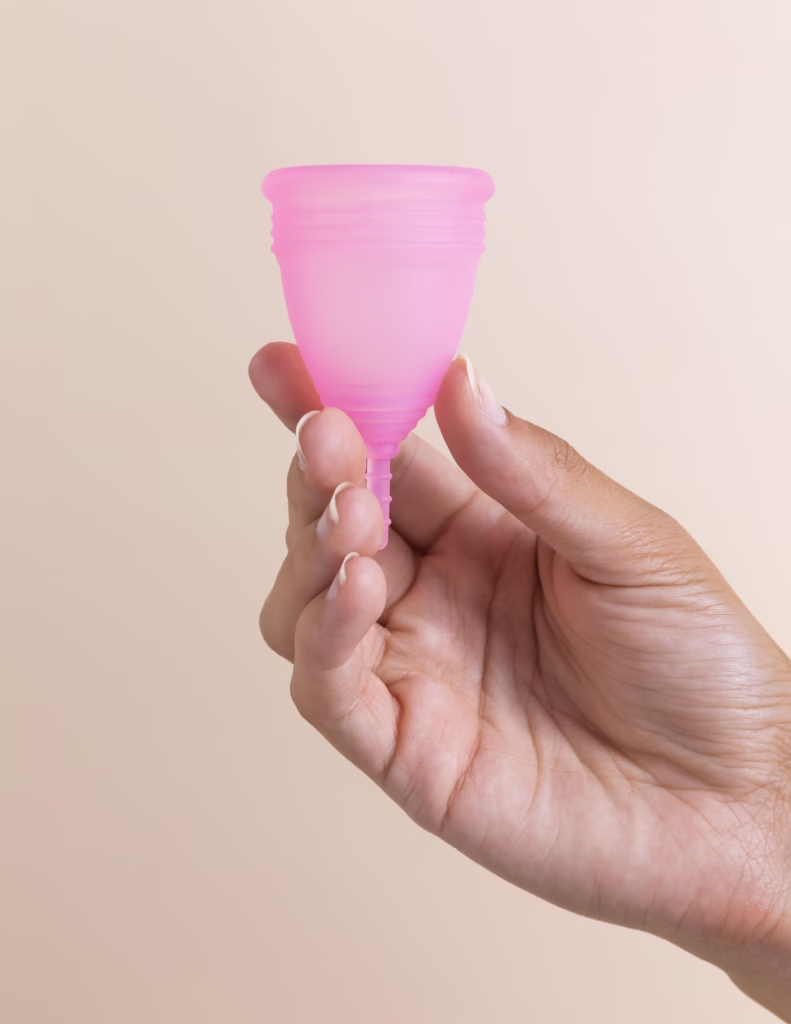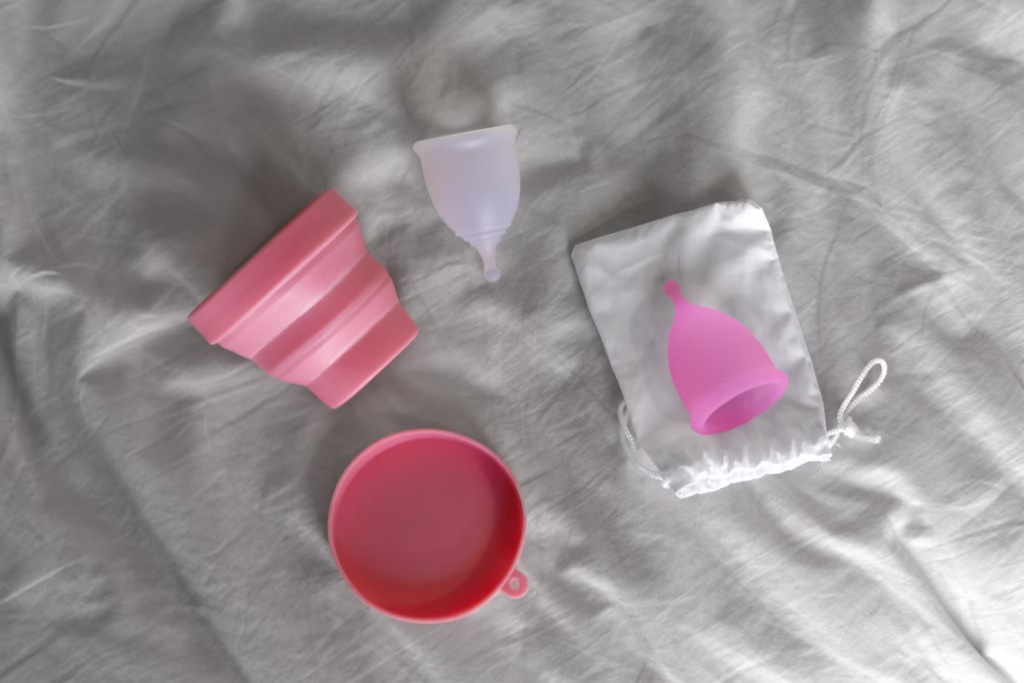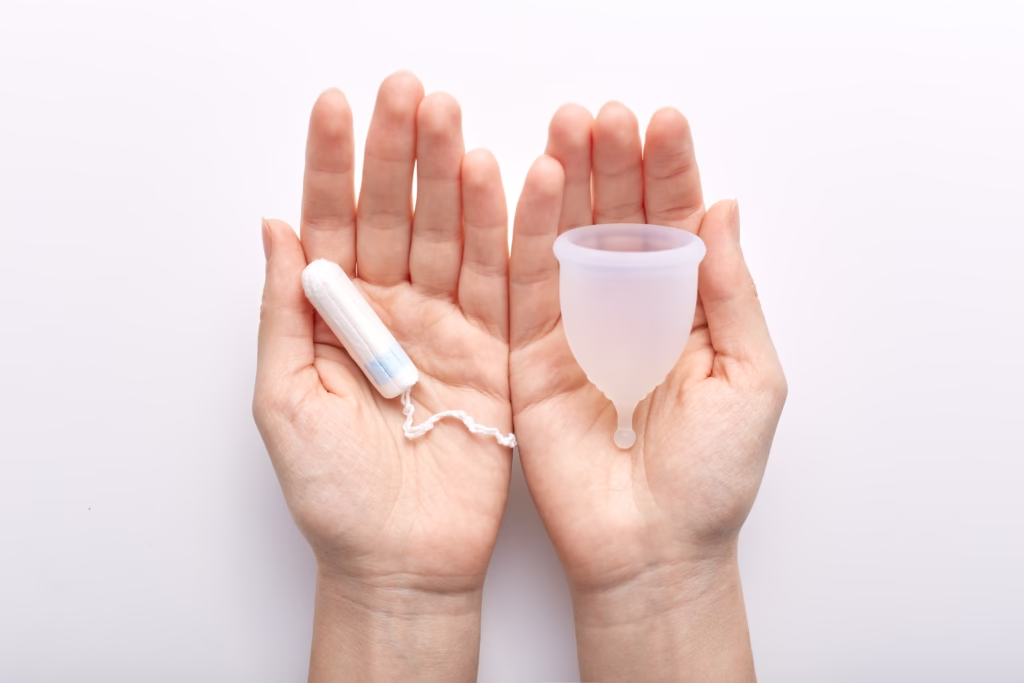Learn how to use menstrual cup with ease and confidence. This step-by-step guide covers insertion, removal, cleaning tips, and common mistakes to avoid—perfect for beginners and curious first-timers.

Table of Contents
Menstrual Cup: A Doctor’s Guide to Safe, Eco-Friendly Period Care
Menstrual care is evolving, and so are the products we choose. Among pads, tampons, and period panties, menstrual cups are becoming a popular option for people looking for a safer, more sustainable, and cost-effective way to manage their periods.
As a doctor, I’ve answered countless questions about menstrual cups — from how to use them, to safety, to common myths. In this guide, I’ll explain everything you need to know about menstrual cups and how they compare with other menstrual products.
What Is a Menstrual Cup?
A menstrual cup is a small, flexible cup made of medical-grade silicone, rubber, or thermoplastic elastomer (TPE) that is inserted into the vagina during menstruation to collect, not absorb, menstrual blood. Unlike tampons or pads, it can be reused for years, making it both eco-friendly and economical.
Types of Menstrual Cups:
Firmness: Soft or firm depending on your activity level
Sizes: Typically available in two options – a smaller size for teenagers or those with a lighter flow, and a larger size suited for adults or individuals with a heavier flow.
Shapes: Bell-shaped, V-shaped, and disc-shaped

How to Use Menstrual Cup
Step-by-Step Guide:
- Wash your hands thoroughly before handling the cup.
- Fold the cup using a C-fold or punch-down fold.
- Insert it gently into your vagina while in a comfortable position (squatting or sitting on the toilet).
- Let it pop open. It should unfold and form a light suction seal to prevent leaks.
- Check placement by rotating the cup slightly or running a finger around the base to ensure it’s open.
You can wear it for 8–12 hours, depending on your flow.
How to Remove a Menstrual Cup
Removing a menstrual cup safely is just as important as inserting it.
Follow these steps:
- Wash your hands.
- Relax. Sit on the toilet or squat comfortably.
- Feel for the base of the cup (not the stem).
- Pinch the base to break the seal.
- Gently pull it out, keeping it upright to avoid spills.
- Discard the contents, rinse the cup thoroughly with water, and either reinsert it or store it safely.
Pro Tip: If it feels “stuck,” don’t panic. Bear down slightly with your pelvic muscles and try again.
Benefits of Using a Menstrual Cup
✅ Cost-Effective: One cup lasts 5–10 years, saving you thousands on pads/tampons.
✅ Eco-Friendly: Zero waste solution. One cup replaces over 10,000 disposable products.
✅ Longer Wear Time: Up to 12 hours of protection — even overnight or during travel.
✅ Fewer Chemicals: No bleaching agents, fragrances, or absorbents.
✅ No Odour: Since the blood isn’t exposed to air, there’s less smell.
✅ Suitable for Active Lifestyles: Perfect for activities like swimming, yoga, and other sports.

Menstrual Cup vs. Pads vs. Tampons
Here’s a clear comparison to help you decide:
| Feature | Menstrual Cup | Tampons | Sanitary Pads |
|---|---|---|---|
| Wear Time | 8–12 hours | 4–6 hours | 4–6 hours |
| Reusable | ✅ Yes | ❌ No | ❌ No |
| Eco-Friendly | ✅ Yes | ❌ No | ❌ No |
| Cost Over Time | Low | High | High |
| Odour Control | ✅ Excellent | ❌ Moderate | ❌ Poor |
| Vaginal Dryness | ❌ Rare | ✅ Common | ❌ Not applicable |
| Leakage Protection | ✅ High | ✅ Medium | ✅ Good |
| Comfortable for Sports | ✅ Yes | ✅ Yes | ❌ Limited |
How to Sterilize a Menstrual Cup: Step-by-Step Guide
Sterilizing your menstrual cup is important for maintaining hygiene and preventing infections. Here’s how to do it safely and effectively:
Method 1: Boiling Water Method (Most Common)
- Wash your hands thoroughly with soap and water.
- Clean the cup with mild, fragrance-free soap and rinse well.
- Boil water in a clean pot.
- Place the cup in the boiling water for 5–10 minutes. Make sure it doesn’t touch the bottom of the pot (you can place it in a whisk or metal strainer to prevent this).
- Remove the cup carefully using tongs.
- Air dry it completely before storing in a breathable pouch (not an airtight container).
Method 2: Microwave Sterilization
- Use a microwave-safe sterilizing cup with water.
- Place the menstrual cup inside, fully submerged.
- Microwave for 2–3 minutes (follow the sterilizing cup’s instructions).
- Let it cool before removing.
Important Tips
- Do not use harsh cleaners like bleach or antibacterial soaps.
- Always sterilize before and after each period.
- Check for signs of wear or damage before reusing the cup.
Common Myths and Concerns
❌ “It can get lost inside.”
It can’t. The cervix prevents it from going further into the body.
❌ “Menstrual cups stretch the vagina.”
No. The vagina is elastic and returns to its normal shape.
❌ “It’s unhygienic.”
Not true when used and cleaned properly.
❌ “Only young or active women can use them.”
Menstrual cups are safe and effective for women of all ages.

Who Should Avoid Menstrual Cups?
If you’re allergic to silicone, rubber, or latex (choose a material accordingly).
If you have vaginal infections or certain anatomical concerns (consult your gynecologist).
If you’re uncomfortable with inserting products internally, try external options instead.
Doctor’s Tips for First-Time Users
- Try it on light flow days first.
- Practice makes perfect. Allow yourself 2 to 3 menstrual cycles to fully adjust and become comfortable with using it.
- Use a water-based lubricant if insertion feels difficult.
- Trim the stem slightly if it pokes or causes discomfort.
- Make sure to wash both your hands and the cup thoroughly before and after every use.
Conclusion
The menstrual cup revolutionizes period care by combining freedom, comfort, and eco-friendliness in a single solution. While it may take a cycle or two to get used to, the benefits are worth it. Whether you’re seeking an eco-conscious option, fewer leaks, or long-term cost savings, a menstrual cup might just be the perfect fit for you.
Still unsure? Talk to your doctor to determine if it’s the right choice for your body and lifestyle.



